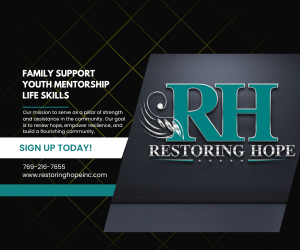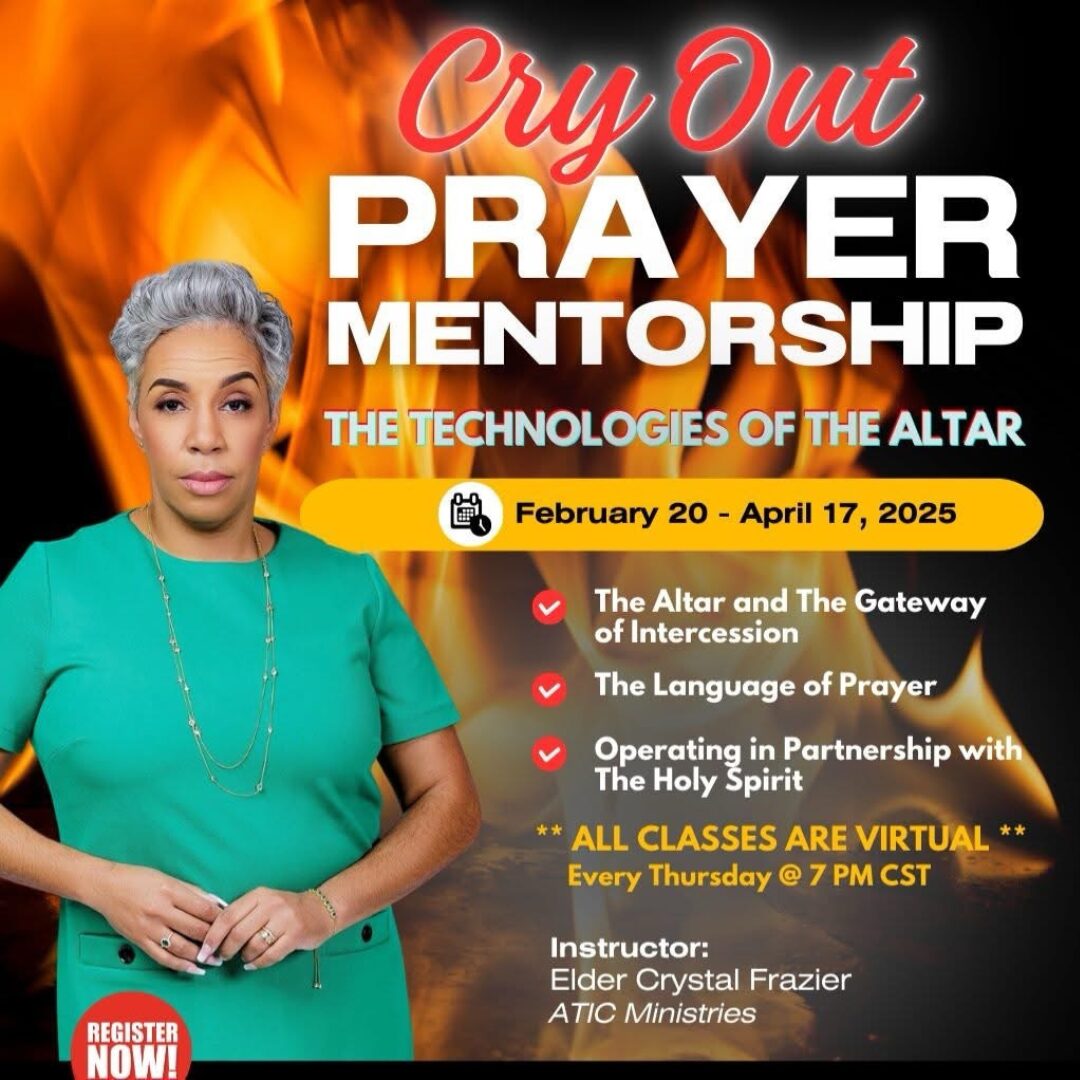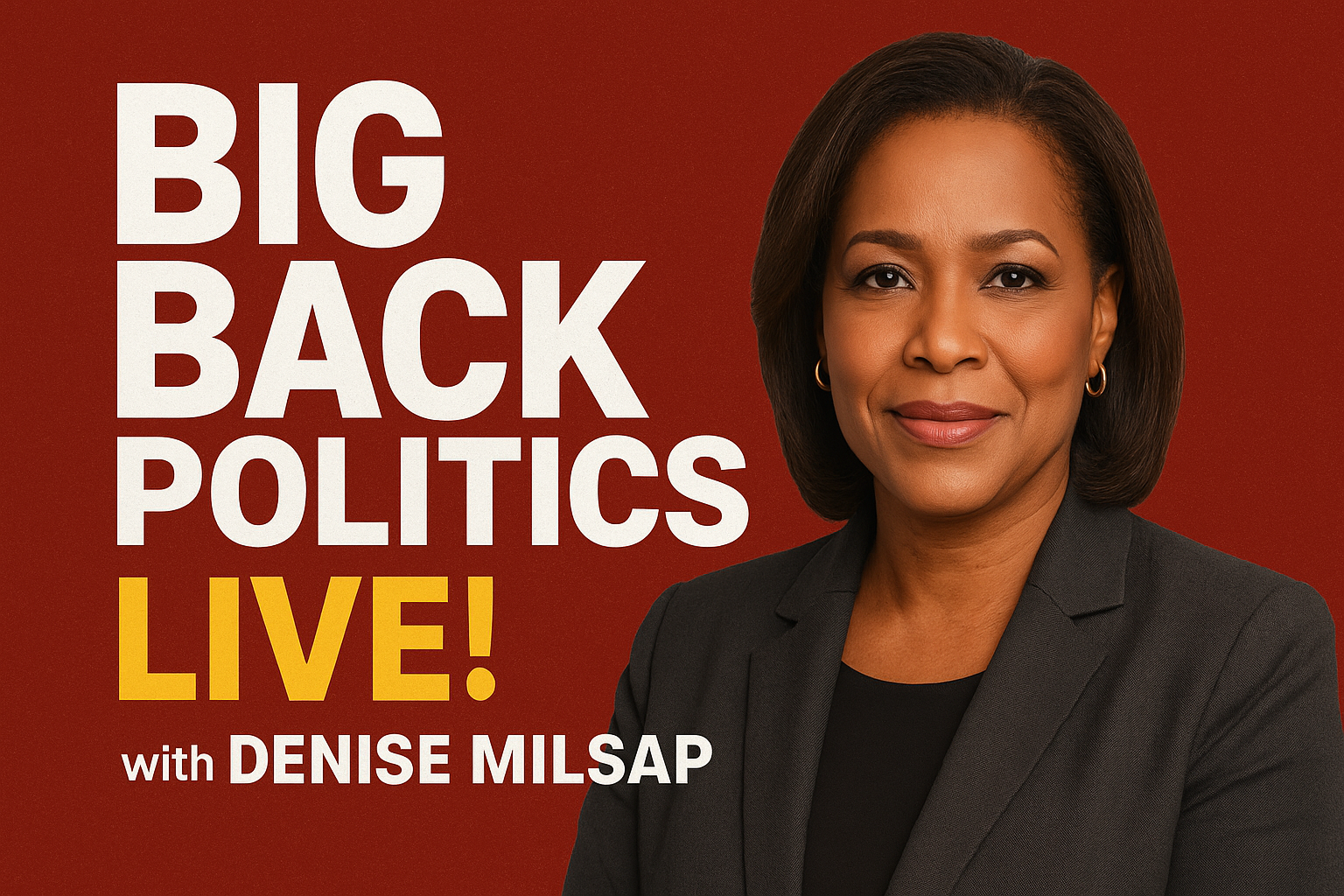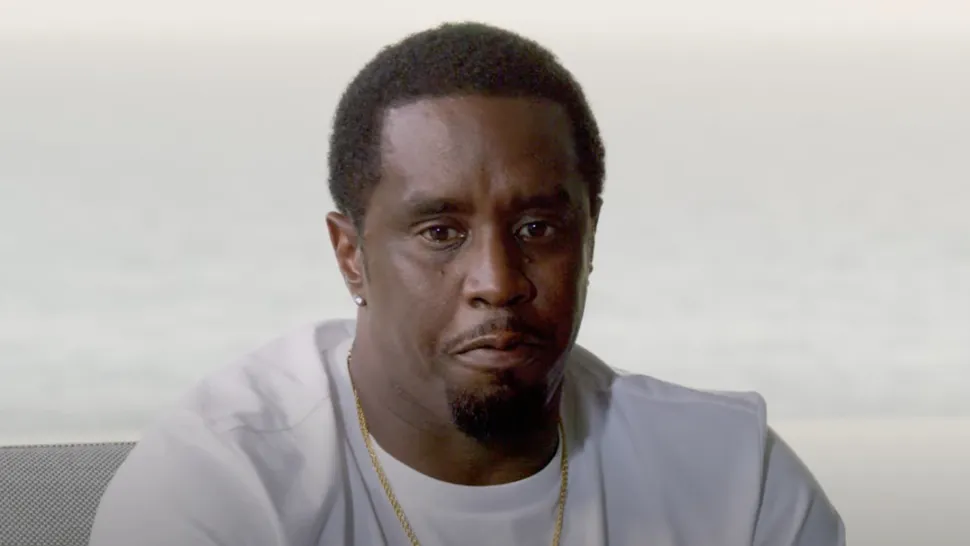Major Takeaways:
Improv teaches essential life skills like listening, adaptability, and teamwork, extending far beyond comedy.
Climate change is reshaping the Arctic, echoing lessons from past polar explorations.
Medical research, including tooth regeneration and Crohn’s treatments, is pushing science into unprecedented territory.
Improv, Climate Change, Polar Exploration, and New Medical Breakthroughs
This week on Viewpoints. Throw away that old script and trust ourselves to improvise and relate
in that moment. We’ll get a much better result.
Why improv isn’t as scary as it stacked up to be. Then… We had rain in January in the high arctic,
which is not something that happened at all when William Behrens, my navigator explorer, was
there more than 400 years ago. Four centuries ago, explorers risked everything to reach the
arctic.
Today, it’s not the cold that poses a real danger. I’m Marty Peterson. And I’m Gary Price.
These stories in-depth this week on your public affairs magazine, Viewpoints. $5,000. That’s the
average amount of money people in the U.S. are now spending on gas in a year.
Five grand. That’s crazy. If you drive, you have to download Upside, the free app that gives you
cash back every time you get gas.
That’s right. You can earn real cash back with Upside. Just by buying the gas you’re already
buying.
You can literally start earning cash back today. I use Upside every time I fill up. I’ve already
made around $200, $300.
You’re putting gas in your car anyway. Why not get real cash back? If you like free money,
download Upside. I’m saving the cash I earn from using Upside to help pay for a vacation later
this year.
Download the free Upside app now to earn cash back every time you buy gas. Use promo code
OWN to get an extra $0.25 per gallon on your first tank. You can cash out any time right to your
bank, PayPal, or a gift card for Amazon and other brands.
Just download the free Upside app and use promo code OWN for a $0.25 per gallon bonus on
your first tank. That’s code OWN for a $0.25 per gallon bonus. You may know funnyman Steve
Carell from The Office, but before his A-list career in Hollywood, you probably don’t know that
he studied and performed improv for nearly a decade at the Second City Training Center in
Chicago.
Second City is notorious for shaping many famous stars over the years like John Belushi, Chris
Farley, Amy Sedaris, Tina Fey, and Stephen Colbert. Each mastered the art of improvisation, or
improv, a comedic live theater that’s made up on the spot. This means no one skit or dialogue is
ever exactly the same.
For most people, the idea of exposing themselves to this kind of vulnerability feels unnerving.
There are no lines to memorize, no script to lean on, just you, a stage, and an audience waiting
to see what happens next. The unpredictability of it all is what makes many shy away, but for
comedian Max Dickens, that same unpredictability is what draws him to the stage.
Things come out of you when you’re improvising that are not filtered through the intellect, so
you’re genuinely surprised by what you say when you’re on stage. And it’s a feeling of, oh,
gosh, I had no idea I knew that word. I had no idea I have that opinion.
I had no idea that I can play this character. It’s a feeling of accessing part of yourself that is
unreachable offstage. Dickens is a London-based comedian, improvisation expert, and author
of Improvise! Use the Secrets of Improv to Achieve Extraordinary Results at Work.
He believes that improv is a valuable skill that everyone should try to cultivate. It’s just pure
connection with somebody else, because there is no script. Obviously, it’s just you and them in
the moment with an audience in front of you.
You’ve only got each other, and you have to rely on each other. And through them, through
how they react in unexpected ways, you get to access part of yourself, ideas, skills that you
didn’t know you had. And so that is the real thrill of it.
It’s finding parts of you that you don’t normally get to express. And it’s a real freedom up there,
I think. Everyone, to some extent, naturally improvises throughout an average day.
Anytime you think on your feet, lead a conversation, adjust to an evolving situation, or quickly
answer an unexpected question, you’re practicing the art of improv. One skill that Dickens
wanted to build through improv? His confidence. Go back ten years, and he was a touring
stand-up comedian who wanted to feel more confident in all areas of his life.
I was on the stand-up comedy circuit in the UK at the time, so I was a professional for seven or
eight years. And I wanted to get into improv to learn some skills to get better at cloud work,
basically, to get better off the cuff so I could host clubs and things like that and improve my
career in that point of view. But the second reason was I felt that when I was on stage doing
these gigs, I was in control, in a way, because I had my material.
I was the only one in the spotlight. I had a microphone in my hand. I was in control, and I was
confident about 20 minutes every night I went up there.
But then offstage, I didn’t feel I had that same level of confidence. So what I wanted was to find
that confidence in some way, and improv was my way into that. Improv comedy is really one of
a kind.
A skit can lead down an unexpected path depending on the group dynamic. But what makes a
show stand apart from all the others? Most people would assume that in order to be good at
improv, you have to be extremely funny, witty, extroverted, and charismatic. However, Dickens
says the most fundamental starting element is not what you’d think.
They listen incredibly well, and I call it listening with intent. So it’s intent to actually show up and
really listen, because often they’re not listening really well. How often when you listen are you
stuck in your head thinking about what you’re going to say next? You’re not listening.
You’re waiting to respond. So it’s intending to listen, and then with the intent of using what you
hear. So improvisers talk about the willingness to be changed.
That’s what listening is. I’m changed by the other person. So it all starts with listening as the
fundamental basis.
A lot of people think improv is about talking and being funny and clever and being really quick.
And maybe there’s an element of that, but you cannot respond to the other person. You cannot
respond to the moment without listening really well.
Another important part of improv is learning how to share the spotlight, because it’s really a
team effort. Think of it like a work meeting. You’ve got different personalities, different roles,
and sometimes the best thing you can do isn’t to take charge, but to step back and make space
for others.
Being aware of this dynamic not only helps the group work better together, but also leaves a
great impression on the people around you. The art form also offers a welcome break from the
usual to-dos of daily life. There’s something about slipping into a character that isn’t you,
shaped by your quirks and your instincts, that makes the experience feel fun, personal, and
surprising.
It’s in those unscripted moments with others that new ideas, connections, and perspectives can
take shape. Performance. People think of performance, and they think, oh, that’s for the stage.
But I think we perform in life a lot as well. We do play characters. It’s not just a metaphor like
Shakespeare said, you know, all the world’s a stage.
But I’m thinking about how often we respond to others in character that we’re stuck in, in roles.
And what improv’s great at is giving you awareness of what your triggers are, what your
buttons are, and your go-to habits in response to these buttons, so that you have more choice
of playing different characters, different roles, in different contexts. Because like you put
yourself, that character is not suitable for every context.
But even in regular relationships, maybe it’s with one person at work, or I don’t know, if you’re
having a tough time with your boyfriend, girlfriend, it’s because we get trapped in these ways
of being, trapped in roles we play with that person, and it gets us into trouble. And we can
throw away that old script and trust ourselves to improvise and relate in that moment. We’ll get
much better results.
Improv’s impact has grown far beyond the stage. Today, many Fortune 500 companies
continue to use improv for team-building workshops and brainstorming sessions. It’s also a
way for employees to build soft skills and have fun by trying something new.
Dickens, a founding member of London’s Hoopla improv company, talks about these
collaborations. You think what communication is, in a nutshell, is an improvisational act. It’s
completely unscripted.
You don’t know what I’m going to say, or my feelings, my thoughts, my knowledge around a
thing, and vice versa. I don’t know what you feel, think, or know around a thing. And we’re
feeling our way, and it’s like a dance, right? It’s going to be give and take.
We’re going to stumble. We can make that part of the dance. There’s probably going to be
moments of choreography, but there’s going to be moments where we just follow what’s there
in the moment.
That’s what real connection is. That’s what great conversations are, and you can have that with
people you manage. You can have that with your clients and your customers.
You can have that with your spouse and your friends. And improv is like yoga for your soft skills.
So if yoga makes your body more flexible, then improv makes your communication more agile.
And this kind of adaptive listening isn’t just useful in a boardroom. It’s something anyone in any
field can practice. Whether it’s at home with family, out with friends, or in everyday
conversations with strangers, the same skills that can make improv click on stage can make
your interactions feel more genuine and connected.
To find out more about Max Dickens and the art of improvisation, check out his book,
Improvise! Use the Secrets of Improv to Achieve Extraordinary Results at Work. You can also
find more resources and links to this topic and archives of all our past shows at
viewpointsradio.org. To get more behind-the-scenes and support our show, follow us at
Viewpoints Radio on Instagram, X, and Facebook. This segment was written by our executive
producer, Amir Zaveri.
Our studio manager is Jason Dickey. I’m Gary Price. Coming up, did you know that today the
Arctic is warming nearly four times faster than the rest of the planet? When Viewpoints returns.
Could this vintage store be any cuter? Right? And the best part, they accept Discover. Accept
Discover? In a little place like this? I don’t think so, Jennifer. Oh, yeah, huh.
Discover’s accepted where I like to shop. Come on, baby, get with the times. Right, so we
shouldn’t get the parachute pants? These are making a comeback.
I think. Discover is accepted at 99% of places that take credit cards nationwide. Based on the
February 2025 Nielsen Report.
It’s a classic odor tale. You fried fish for dinner, cleaned up, but the smell is still in the house.
And the neighbors are coming over for game night.
They’re on their way. And then you spray Febreze Air Mist. Febreze Air starts working instantly
to fight even your toughest odors, so you go from fish to fresh like that.
Now all you have to worry about is Pam cheating at charades. $5,000. That’s the average
amount of money people in the U.S. are now spending on gas in a year.
$5,000. That’s crazy. If you drive, you have to download Upside, the free app that gives you cash
back every time you get gas.
That’s right. You can earn real cash back with Upside. Just by buying the gas you’re already
buying.
You can literally start earning cash back today. I use Upside every time I fill up, and I’ve already
made around $200, $300. You’re putting gas in your car anyway.
Why not get real cash back? If you like free money, download Upside. I’m saving the cash I earn
from using Upside to help pay for a vacation later this year. Download the free Upside app now
to earn cash back every time you buy gas.
Use promo code OWN to get an extra 25 cents per gallon on your first tank. You can cash out
any time right to your bank, PayPal, or a gift card for Amazon and other brands. Just download
the free Upside app and use promo code OWN for a 25 cents per gallon bonus on your first
tank.
That’s code OWN for a 25 cents per gallon bonus. The Arctic is no longer just a mysterious
destination for documentaries and photos. Today, it’s a barometer for the planet’s health.
According to NASA and the National Snow and Ice Data Center, since 1979, the Arctic has lost
ice at nearly 4.7 percent per decade. And a recent study in the journal Nature Communications,
Earth and Environment, projects that the first ice-free summer day in the Arctic could happen
before 2030. Now, imagine traveling to that vanishing frontier in 1594, when Dutch explorer
William Behrens set sail into the unknown.
For him and his crew, getting stranded in the icy, frozen tundra meant almost certain death.
Behrens was starting the first of what would be three expeditions to explore the Arctic region in
hopes of finding a northeast passage. If successful, the discovery would shorten the lengthy
trip from Europe to Asia that forced traders to sail all the way around Africa.
While Behrens never found this passage, what did return were stories of the Arctic that still live
on today. They were sailing at that point off of any known map in existence. They didn’t know if
they were going to try to head north of these, what they thought were probably islands, but
they also thought it might be part of a polar continent.
At this point, it was thought there might be a giant continent sitting at the top of the planet.
And then when they did get stranded, they knew that no one would know where to find them.
No one would have any idea where to go or where to look for them or where they might be.
That’s Andrea Pitzer, a journalist and the author of Icebound, shipwrecked at the edge of the
world. She says that what Behrens and his crew did back in the late 1500s is the equivalent of
traveling to Mars today. There was no concept of what they would find or who they would
encounter while there.
Pitzer herself traveled to the Arctic three times to get a better sense of the landscape. First time
I went, my big goal was to learn what it would be like in polar night. Since they were stuck there
over the winter when there’s no sunlight at all, literally the sun doesn’t come up.
I wanted to get a feel, at least for a few days, of what that would be like. So I went on a dog
sledding expedition on Svalbard, which is halfway between Norway and the North Pole. And I
went up and it was pretty amazing to go away from the coast, away from any light.
When the only lights that were there were if there was light reflecting, a little bit of moonlight
maybe off the snow. Other than that, we had to wear headlamps in order to be able to see
where we were going and for the dogs to have some sense of where they were going. This
darkness and isolation can take quite a toll.
Imagine several days without sunlight or seeing or speaking to another living thing. For an
entire winter during the third expedition, Behrens and his crew fought for their lives as they
waited for temperatures to rise and their ship to thaw out and break free from the frozen ice.
The ship was still frozen in in June.
And so they finally gave up on trying to get the ship out of the ice and they just decided to come
home in their small boats. So these are not large boats at all. They burst them up a little bit to
make them a little sturdier for the voyage, a little more appropriate for these men to try to
come in as a group.
But they ended up having to sail more than a thousand miles in open boats on an open sea
before they were able to find another ship that could then take them in. Many of them did
eventually get back to Amsterdam. While much of the crew survived, Behrens succumbed to the
Arctic winter and died on the voyage back.
It was pretty incredible because they came into harbor and immediately a word spread that
they had returned because everybody had been gone so long at this point. They had set out
well over a year before that it had just been assumed that they were sort of dead and rotten,
that they had vanished from the face of the Earth. And then to show up, so many of them alive,
was extraordinary.
In 2019, the ship that Pitzer was traveling on broke down and the engine couldn’t be repaired.
We had to use just sails. We didn’t have any motor at all available to us.
It wasn’t possible to fix it while we were at sea. And so we had to come back only using the
power of the wind, which is pretty incredible when the wind is not blowing in your direction.
And that happened to be the case with us several times.
So there’s a thing you do called tacking into the wind where you make very little forward
progress and you’re sort of zigzagging side to side. And the boat is tilted at like a 45 degree
angle and it makes for some wild seafaring. And the Barents Sea itself, which is now named
after him, which is that sea between Nova Zembla and Murmansk that we had to cross, the
Barents Sea has been known as the devil’s dance floor for its choppiness because it has warm
water and cool water coming from opposite directions and mixing.
So it was quite an adventure to sail that just as the Barents would have sailed it. For me, it really
helped me imagine what it had been like for them back then. But back then, the Arctic looked
much different.
Today, massive ice sheets are melting at an alarming rate, leading to an unsustainable
landscape for wildlife and rising sea levels across the world. A study in the journal The
Cryosphere shows that global ice melt has accelerated by 57% since the 1990s, leaping from
about 800 billion tons per year back then to over 1.2 trillion tons today. Meanwhile, NASA and
European Space Agency data synthesized by the IMBE project show that Greenland alone is
shedding around 234 billion tons of ice per year, a staggering seven-fold increase compared to
the 1990s.
During Pitzer’s third voyage to the Arctic, she traveled to the same islands that Barents and his
crew had once been stuck on. The glaciers had retreated so far on the maps of glaciers that we
had that it was extraordinary. The maps just were no longer accurate at all.
And in fact, we saw an island there that we were some of the first people to see because
glaciers had retreated so far that they had revealed an island that no one knew until recently
even existed. And when we sailed into the place where their ship got frozen into the ice, we
were only there a week earlier in August than they had been back in 1596. They had gotten
completely frozen in.
But today, in that harbor in August, there’s no ice at all. There’s just not any ice there. Even in
recent memory, huge changes have already taken place.
A few years back, almost half of Canada’s last fully intact ice shelf, the Milne Ice Shelf in the
northernmost part of the country, collapsed into the sea. This broken piece is larger than the
island of Manhattan. Protecting this region isn’t just about saving a remote, icy wilderness.
It’s about safeguarding the future of the planet. At today’s pace of glacial melt, the fate of
several cities and countries worldwide hangs in the balance. The U.S. Geological Survey notes
that if every glacier and ice cap were to disappear, global sea levels could rise by more than 200
feet, which is enough to submerge every coastal city and island on Earth.
While the Arctic has transformed dramatically since Barents first sailed its waters, climate
scientists caution that the greatest mistake would be for us to sit back and accept its decline as
inevitable. And while we still have a chance to intervene and save a lot of what’s left there, I’d
like to encourage people to sort of see the differences between then and now and to think
about what we can do to protect some of the things that Barents was the first to record the
existence of. To find out more about this topic and our guest Andrea Pitzer, visit
ViewpointsRadio.org. This segment originally aired in February 2021 and was written and
produced by Amira Zaveri.
Our studio manager is Jason Dickey. I’m Marty Peterson. Viewpoints returns in just a moment.
Do Crohn’s disease or ulcerative colitis symptoms keep coming back? Tremphaya, gaselkomab
may help, with rapid remission achieved at 12 weeks and lasting clinical remission at one year.
Some even saw visible improvement of their intestinal lining at 12 weeks and one year.
Tremphaya is a prescription medicine used to treat adults with moderately to severely active
Crohn’s disease and adults with moderately to severely active ulcerative colitis, serious allergic
reactions and increased risk of infections and liver problems may occur.
Before treatment, your doctor should check you for infections and tuberculosis. Tell your doctor
if you have an infection, flu-like symptoms, or if you need a vaccine. Healing is possible with
Tremphaya.
Approximately three out of ten patients were in endoscopic remission at one year. Based on
areas visualized on colonoscopy, which may not represent the deeper bowel layer or entire GI
tract, individual results may vary. Ask your doctor about Tremphaya today.
Call 1-800-526-7736 to learn more or visit TremphayaRadio.com. This is Viewpoints Explained.
I’m Ebony McMorris. For so many people, losing a tooth means many trips to the dentist,
potential pain, trouble eating, reduced confidence, and other issues.
But what if your body could regrow a new tooth? This possibility is now being tested in human
patients in Japan. The trial medicine targets a protein called USAG1, which normally signals the
body to shut down tooth development. By blocking it, researchers hope to wake dormant tooth
buds and trigger a new tooth to grow.
Early animal studies found that a single antibody dose could produce a whole tooth in mice and
show promise in ferrets, which have dental patterns similar to humans. The first trial, which
began last September, includes 30 adult men ages 30 to 64, each missing at least one tooth.
Over 11 months, these men received the drug intravenously, while researchers tracked safety
and effectiveness.
The next step in the clinical trial plans to test children ages 2 to 7 who are born with a
developmental condition that causes multiple missing teeth. A Japanese startup is the driver
behind the lengthy trial. If all goes well, the company hopes to bring a treatment to market by
the year 2030.
If all goes well, the company hopes to bring a treatment to market by the year 2030. This could
be a viable option for about 7% of adults worldwide who are suffering from tooth loss. In
people over 60, this number jumps to one in four.
For now, it’s too soon to know if this dental treatment will be a lasting fix, but if the trial
succeeds, it could mark a turning point in how we think about aging, repair, and what our
bodies are capable of. That’s Viewpoints Explained for this week. More in a moment.
Welcome to Culture Crash, where we examine what’s new and old in entertainment. Since
kicking off in earnest with Superman, the new Warner Bros. DC Comics DCU universe is off and
running.
This interpretation of DC is being masterminded by James Gunn, and the continuity started with
this summer’s Superman flick is now continuing into Peacemaker Season 2. Written and
occasionally directed by Gunn himself, Peacemaker is an HBO Max original series starring John
Cena, who reprises his role from Gunn’s film The Suicide Squad. In contrast to the family
friendly PG-13 tone of Superman, Peacemaker is very much a TVMA show made for adults. The
show follows the titular character and a secret government black ops team tasked with
protecting humanity from otherworldly threats.
Hair metal music, ultra-violent superhero hijinks, and a bevy of foul language abound in what
turns out to be a feel-good, band-of-misfits found-family superhero show. What’s especially
interesting about Season 2 of the show is that Season 1 occurred in the previous DCEU. To pivot
the show into our new DCU universe, Season 2 had to make a brief correction to its canon in
the previously-on at the beginning of its first episode.
Instead of the old Snyderverse Justice League showing up for a cameo, Season 2 of Peacemaker
switched them out for the new DCU Justice Gang. And just like that, Peacemaker is now in the
continuity of the Superman movie. Though I don’t think anything that happens in Peacemaker
is ultimately going to matter too much for the theater-made film entries, fans of the DCU who
are game for a lowbrow-sensibility action-comedy with a lot of heart will find plenty of universe
details to revel in.
But the show is also worth watching on its own merits. Cena turns in a hilarious and
surprisingly moving-at-times performance as Peacemaker, and he’s surrounded by a
tremendously fun cast that includes Jennifer Holland, Danielle Brooks, and Freddie Stroma.
Peacemaker is now streaming on HBO Max.














